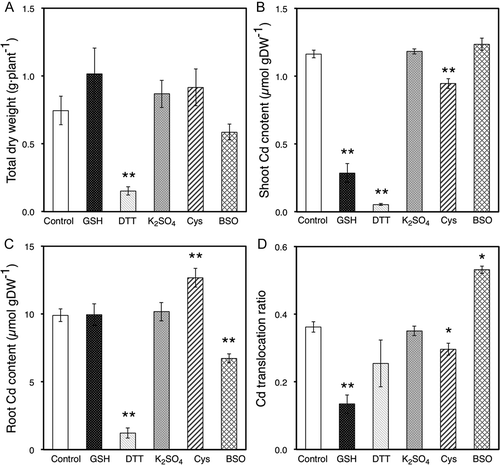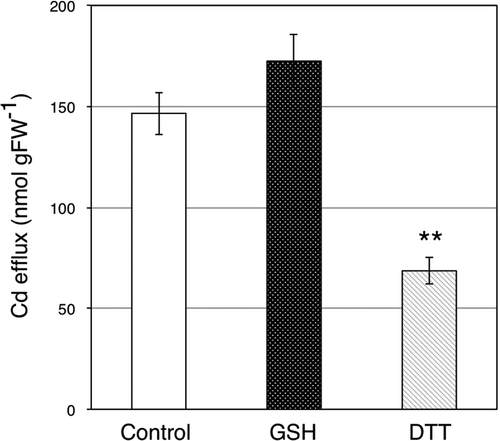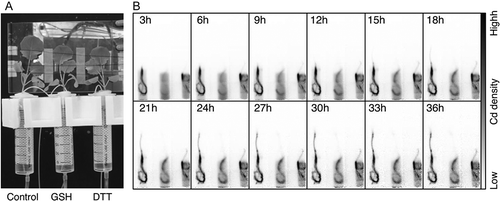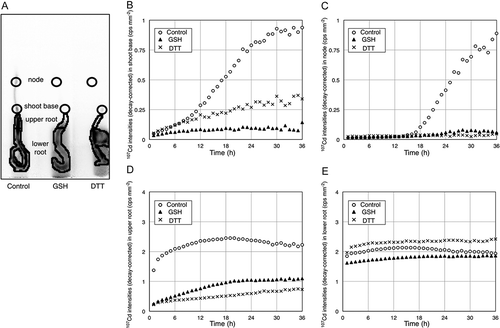Figures & data
Figure 1. (A) Total dry weight of oilseed rape plants (Brassica napus L.) harvested after 2 d of treatment. (B, C) Cadmium (Cd) content in the shoots (B) and roots (C) of oilseed rape plants harvested after each treatment. (D) Cd translocation ratio of oilseed rape plants. Ratios were calculated from experimental results of dry weights and Cd content in shoots and roots. Data are means ± standard error (SE; n > 4). Values labeled with * and ** are significantly different from those of control plants according to Student’s t-test (*: P < 0.05, **: P < 0.01).

Figure 2. (A) Total dry weight of oilseed rape plants (Brassica napus L.) harvested after 2 weeks of treatment. (B, C): Cadmium (Cd) contents in the shoots (B) and roots (C) of oilseed rape plants harvested after each treatment. (D) Cd translocation ratio of oilseed rape plants, calculated from experimental results of dry weights and Cd content in shoots and roots. Data are means ± standard error (SE; n > 4). Values labeled with * and ** are significantly different from those of control plants according to Student’s t-test (*; P < 0.05, **; P < 0.01).

Figure 3. Cadmium (Cd) distribution ratio in the symplast sap, apoplast sap and other parts of roots from oilseed rape plants (Brassica napus L.). These ratios were calculated from experimental results of atomic absorption spectrometry analysis and the amount of symplast sap, apoplast sap and the residuals.

Figure 4. Cadmium (Cd) efflux from root cells of oilseed rape plants (Brassica napus L.). The amount of Cd released from root cells to nutrient solution with GSH or DTT applied for 24 h was investigated. Experimental results are indicated as the amount of Cd in the nutrient solution normalized by root fresh weight. Data are means ± standard error (SE; n > 4). Value labeled with ** is significantly different from that of control plants according to Student’s t-test (P < 0.01).

Figure 5. PETIS imaging of cadmium (Cd) behavior in oilseed rape plants (Brassica napus L.). (A) Field of view of a representative PETIS experiment. (B) Time series of PETIS images showing the 107Cd signal (0–36 h) after decay correction. Each image shown is a composite of 45 original images collected every 4 min. Each plant treatment is shown in the lower part of .

Figure 6. Time-course analyses of cadmium (Cd) behavior in the node and shoot base. (A) regions of interest (ROIs) for time-course analyses. Circles in panel A indicate ROI from shoot base and node (B, C); polygons in panel A also indicate ROI from upper root and lower root (D, E): time activity curves of 107Cd signal in ROI from shoot base (B) node (C), upper root (D) and lower root (E) are plotted. Each graph indicates the intensity of 107Cd signal after decay correction.

